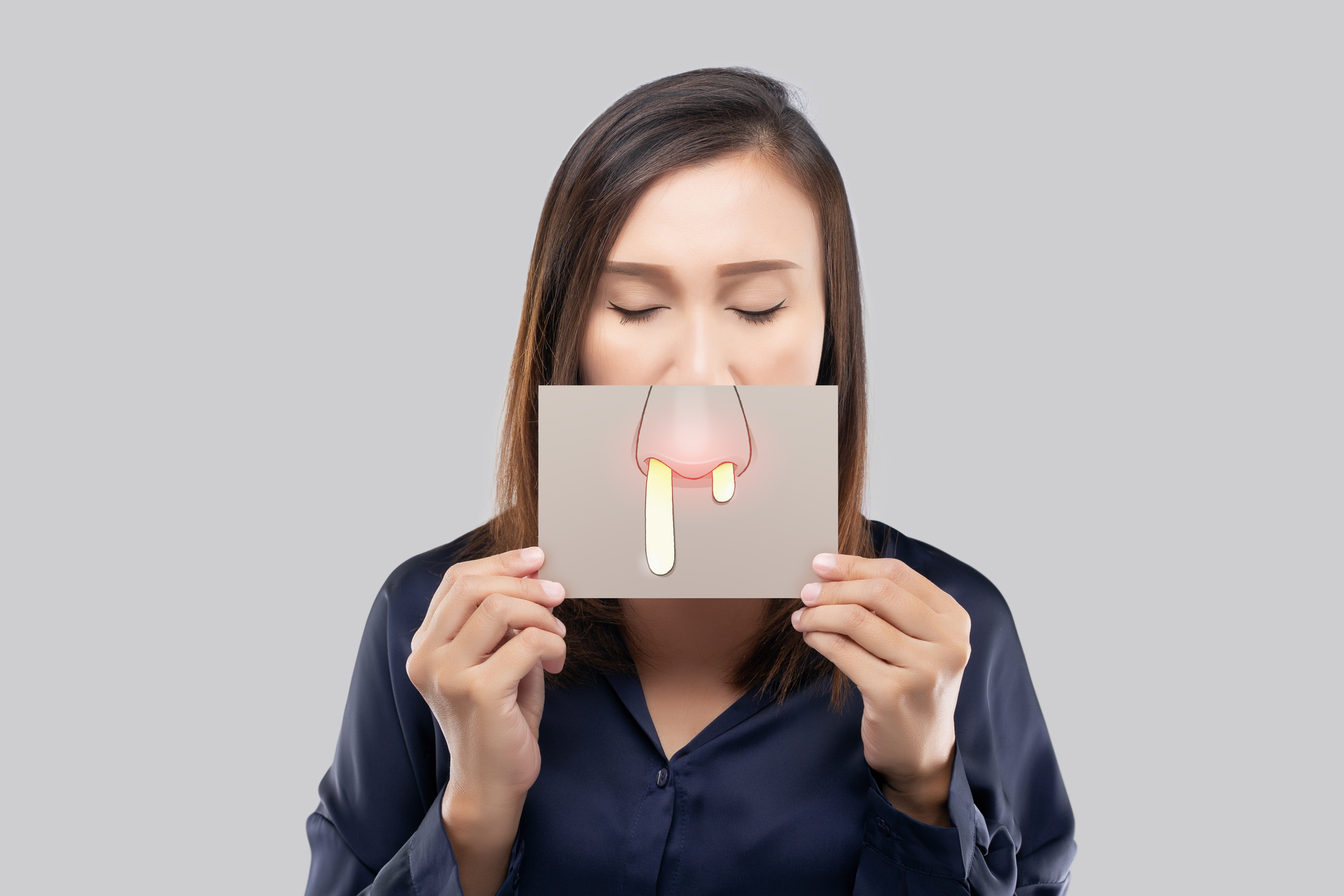

I had the misfortune of coming down with Covid during the holidays. Luckily my symptoms were mild, and I’ve pretty much recovered from the worst of them.
But one thing that’s lingered for a couple of weeks now is the congestion.
This may be TMI, but I’ve been keeping an eye on my mucus output. Since I’m prone to sinus infections, I want to be sure that’s not what’s developing here.
And I know that different colors of mucus mean different things in terms of health…
The purpose of mucus
Mucus isn’t just found in the nose. This gel-like substance coats the surfaces of the mouth, nose, eyes, sinuses, lungs, stomach and intestines and keeps these tissues from drying out.
Then there’s the mucus in your nasal passages. Also known as snot, it’s a mixture of water, protective proteins and salts that keeps your nasal passages germ-free in two ways…
First, it acts as a moisturizing barrier against dehydration and foreign intruders, including bacteria and viruses. Second, it is sticky enough to catch any nasties you may breathe in. Then, little hairs in the nose push the mucus through the throat down into the stomach, where acid disintegrates the invaders.
The body naturally produces a lot of mucus, so it’s not necessarily a bad thing when your nose is a little runny — particularly if the snot is clear. That means all is well health-wise.
However, if the amount of snot increases dramatically, it could mean you’re suffering from allergies or the start of a cold or flu (or Covid). This is when you want to start watching out for any changes in color.
White snot
If your snot turns a translucent or opaque white, it could mean a few things. Most often, it indicates swollen, irritated nasal passages. When this happens, it restricts mucus flow and causes it to dry out, producing the whitish color.
White snot could also be caused by the immune system fighting off an infection, allergies or dehydration. As the immune cells go to work against whatever is irritating the nose, they release molecules that then give the snot a cloudy white appearance.
If the white snot is being caused by a virus, this is the stage at which you’re most contagious.
Yellow or green snot
When your snot turns yellow or green, it means your body is probably fighting a viral or bacterial infection. When you’re attacked by a virus or bacteria, your immune system sends white blood cells to the site to fight and destroy the intruders.
Once they’ve done their job, the white cells die off and are flushed out of your body with your mucus. In the process, they can color the mucus yellow or green.
It’s a common belief that yellow or green snot means you need antibiotics, but that’s not necessarily true. Often the infection is caused by a virus, which would make the antibiotic useless. And most experts will tell you that taking antibiotics for sinus infection is probably worthless.
At this point, it’s probably best to trust your body to fight off the invader. If the infection doesn’t improve in a week or so, then it may be a good idea to see your doctor, especially if you have nausea or a fever.
Pink or red snot
If your snot is pink or red, it means your nasal passages are bleeding. The obvious reason for a bloody nose is some sort of physical trauma to the nose. However, bleeding inside the nose can also happen as a result of allergies, infection or extreme amounts of blowing or rubbing.
Very dry air can also dry out the nasal passages and cause them to bleed, especially if you live in an area with very cold winters. Running a humidifier can help offset this dryness and keep your nasal passages moist.
Brown snot
When the blood from your nasal lining dries, it can mix with the mucus and turn brown. Other causes of brown snot include breathing in dust, dirt, snuff, spice or cigarette smoke.
If you’re coughing up brown mucus, you should definitely see a doctor because it could be a sign of bronchitis.
Black snot
If you have black snot, it usually means you’re a heavy smoker or have a lung disease. But it can also be a result of inhaling dust or dirt, especially if you live in an area with a lot of soot and other pollutants in the air.
Black snot can also indicate a serious fungal infection, particularly in immunocompromised people. Go to your doctor immediately if your snot turns black and is accompanied by a fever, chills or difficulty breathing.
Dealing with excessive snot
As helpful as snot can be, it quickly becomes an annoyance when your nose is stuffy or running all the time. You can of course take antihistamines to stop your nose from running, or decongestants to free up clogged nasal passages.
There are also some natural ways to deal with excessive mucus. We mentioned the humidifier earlier — keeping your nose and throat moist may help reduce mucus production. Applying a warm, damp washcloth to your face can accomplish the same thing.
Using a nasal saline spray or rinse can help clear out mucus and ease your breathing. There are a number of prepackaged saline sprays, or you can use a neti pot to irrigate your sinuses. If you do the latter, make sure you only use distilled, sterile or previously boiled water to make the saline solution.
Excess mucus can often create painful sinus congestion, pressure and pain. If that’s you, check out the latest on the superfood enzyme that “dissolves” sinus pain and pressure.
Sources:
Snot Comes in Many Colors, And It Can Tell You About Your Health — Science Alert
Marvels of Mucus and Phlegm — NIH News in Health
